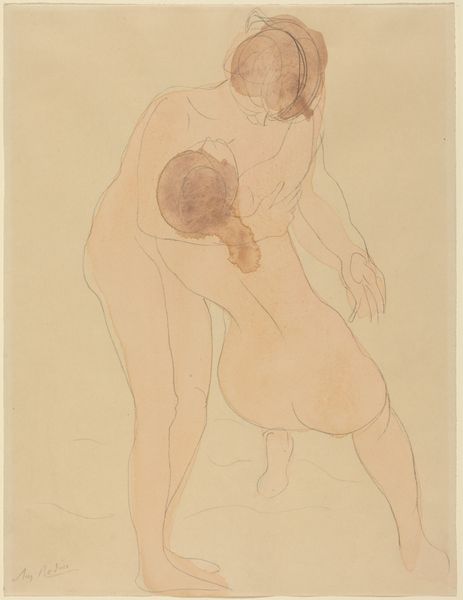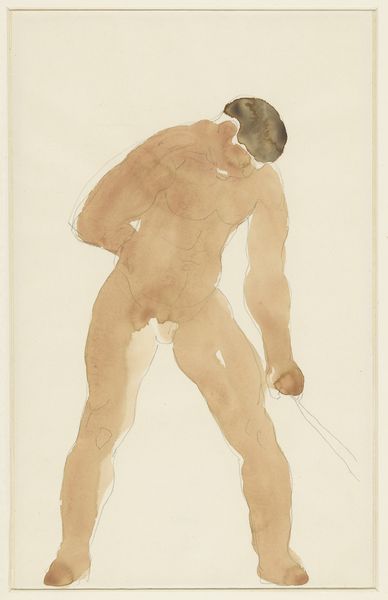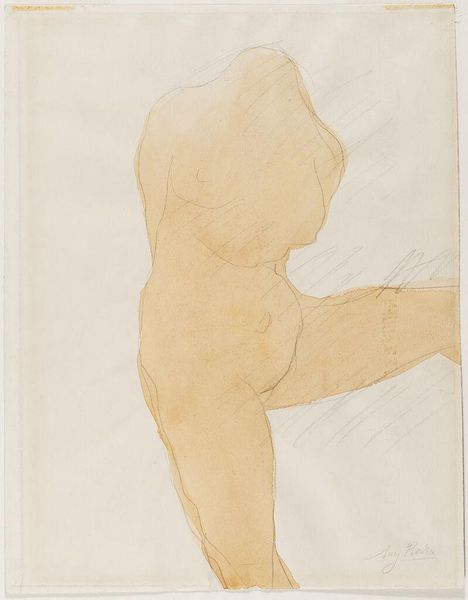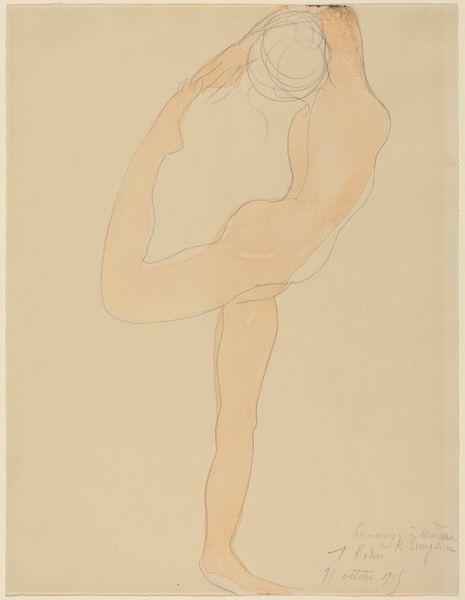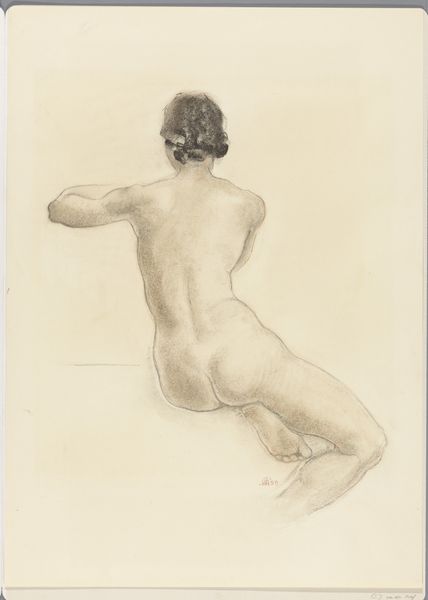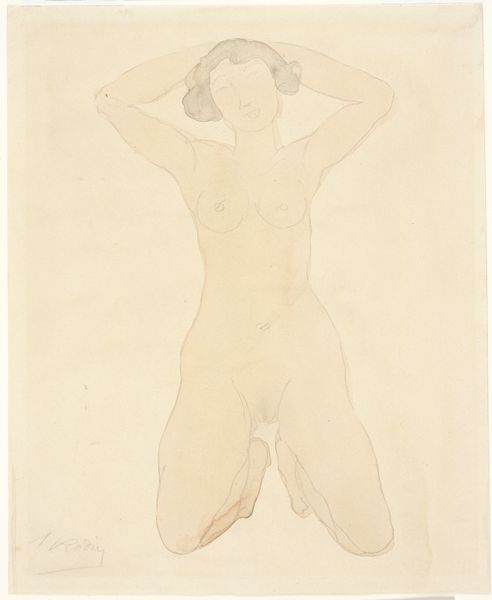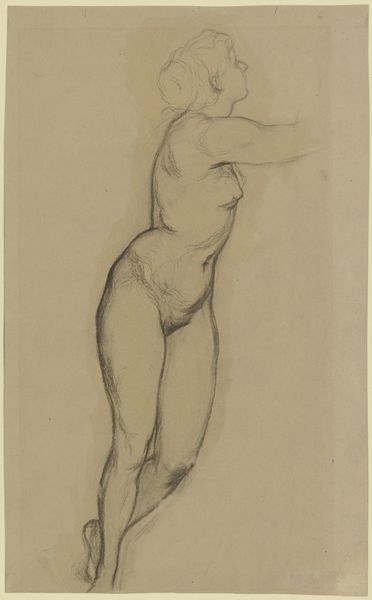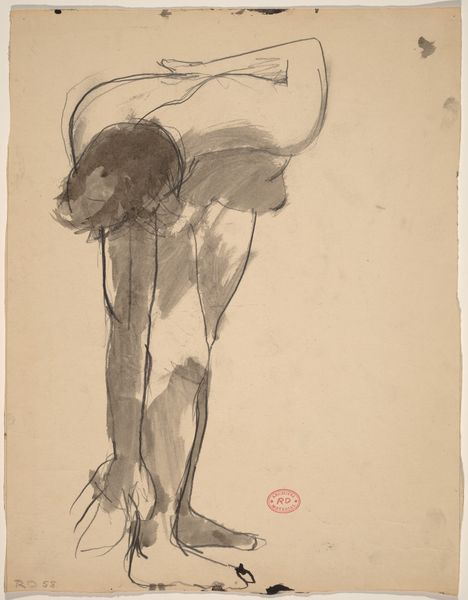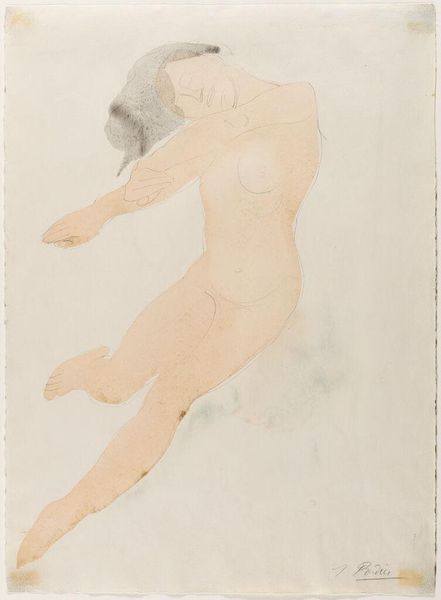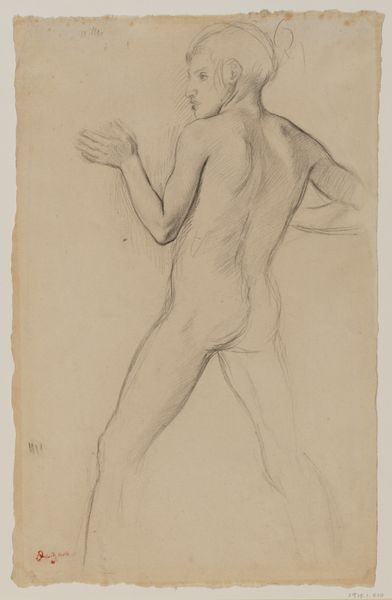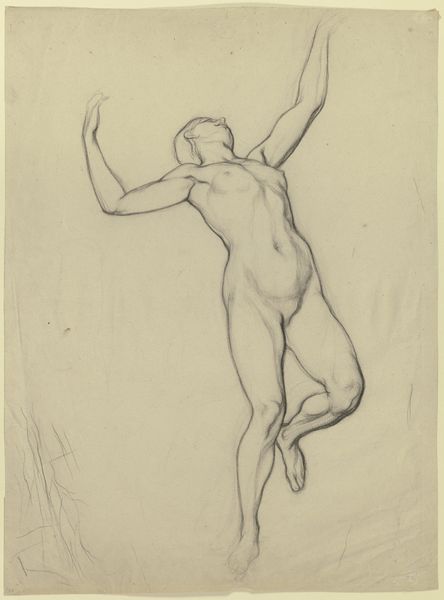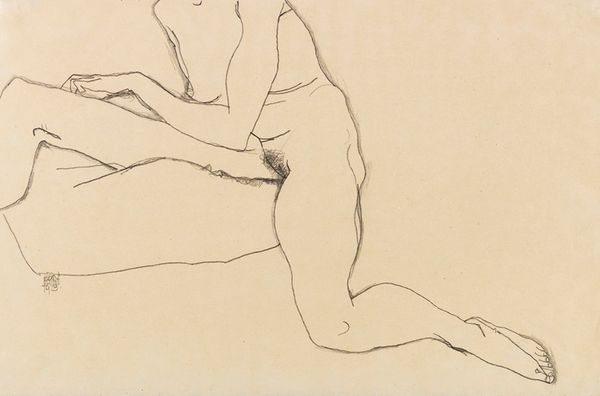
Copyright: Public Domain
Curator: Oh, there’s such vulnerability in this posture. It’s almost painful to watch, like a primal scream translated into a contorted pose. Editor: Indeed, it’s a rather visceral sketch. Here we have Auguste Rodin’s “Woman Dancing with Her Head Thrown Back, rear view," dating from around 1890 to 1917. This drawing, rendered in watercolor, resides here at the Städel Museum. Curator: Watercolor… of course. It makes it feel ephemeral, transient. Look at those ghostly outlines barely defining her form. It feels like capturing a moment that’s already vanished. Was he trying to capture the essence of fleeting passion, perhaps? Editor: I think that's part of it. Rodin was, of course, obsessed with movement and capturing raw emotion. But it's important to remember the social context, too. The late 19th century saw increased artistic exploration of female bodies outside traditional academic poses. Curator: You're right. It breaks from classical depictions, doesn't it? This isn't a poised goddess, but a woman lost in…something. I wonder what music she’s hearing. What demons she’s battling. It seems a struggle between abandon and captivity to me, maybe internal demons… Editor: That tension is palpable. Rodin challenged the academic system by making preparatory drawings central to his practice, rather than studies for larger sculptures. So in that sense, he really was making a statement about the power and the autonomy of the artistic line itself. And of the female figure. Curator: Interesting! So it wasn’t just about the subject matter, but a whole ethos of defiance, of breaking free from constraint. Almost like the woman is doing. It resonates, doesn’t it, with anyone who’s ever felt the urge to cast off expectations? Editor: Exactly. Rodin pushed against artistic boundaries and also societal ones in his art. "Woman Dancing" shows this clearly. These nudes, like the artist’s broader exploration of the figure, were deeply engaged with pushing boundaries, engaging in the conversations, and inevitably, shaping public views of art and the role of the female figure. Curator: It definitely lingers with you after you leave it, which speaks to its power. The incompleteness becomes part of the emotional expression. Editor: An apt conclusion. Rodin's study holds lessons beyond the technique of watercolor – he embodies a larger discourse concerning autonomy, public view, and artistic purpose.
Comments
No comments
Be the first to comment and join the conversation on the ultimate creative platform.
